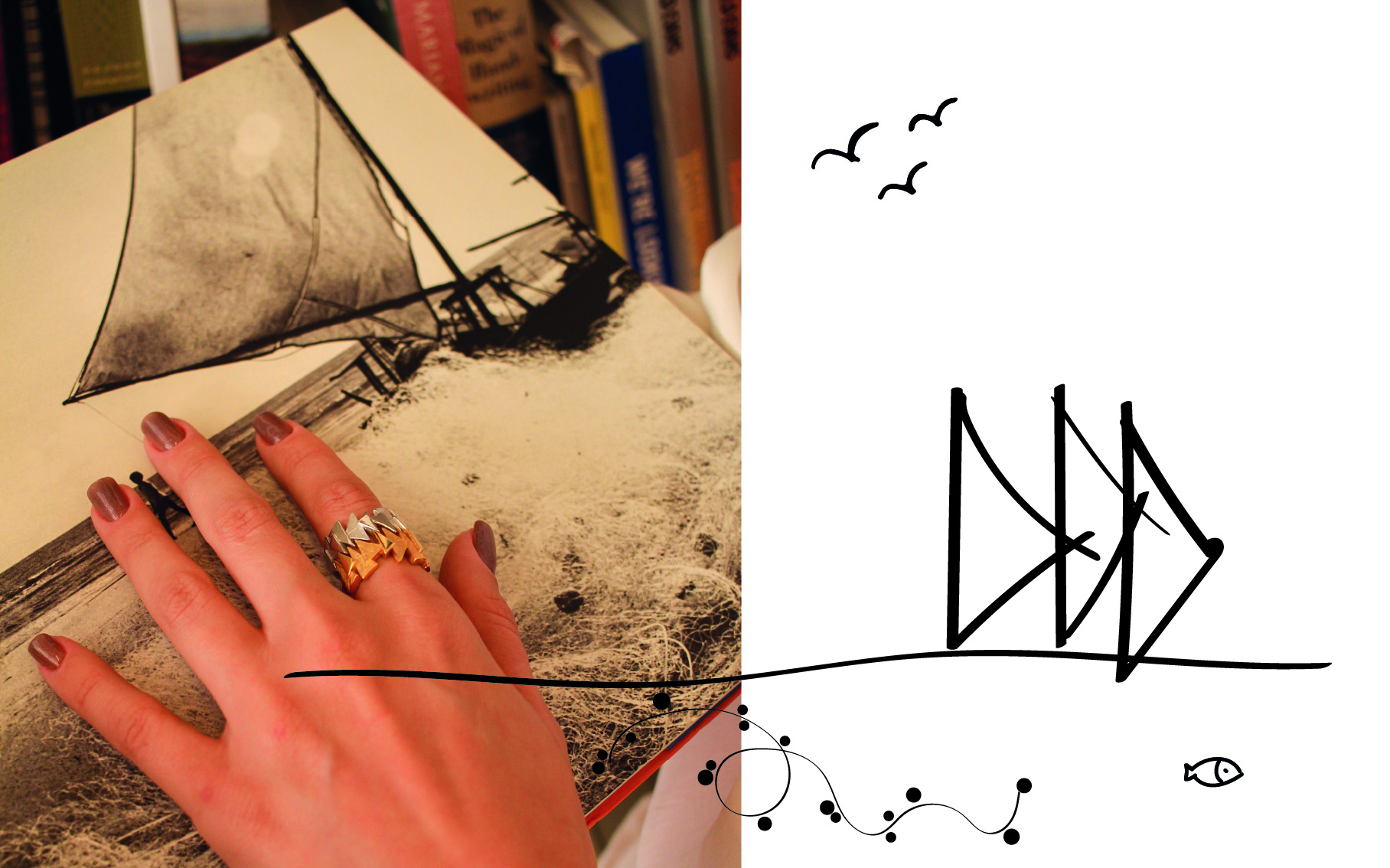Finally, I have the Blog/Journal ready to reach you. The intention is to “share, give, gift, provide” valuable content:
- Practical information, in today’s case; and
- Playful ludic information, in the posts to follow : )
“I believe there is a jeweler, a seamstress, a potter, there is an embroiderer woman in every one of us.”
Probably if you are here is because you (like me) possibly have a profession (in my case, I am an ARCHITECT ) and you nurture the dream of also making jewelry… and who knows, maybe have your own jewelry brand!
To help you on your way, I chose to start this space sharing valuable information about what makes the existence of my brand possible: my small production chain. Yes, in this case, they are companies in Barcelona, Spain. But do not be discouraged, surely there is a jewelry chain like this in your city (how about already starting to look for it?). If I can, I will help you find it!
“Ideas are cheap, execution is everything.” Chris Sacca
Paraphrasing Chris in the above sentence I would add: “ideas are cheap, execution is expensive”. Especially if you, like me, want to produce quality pieces, and here a pressing issue comes in: sustainability, which I will address in another post.
Step Zero. BUY METAL
I usually buy “in quantity” (example, my last purchase was yesterday, 300 grams of fine silver); except for gold, which I buy in small quantities according to the pieces already sold. What does this translate into? That I always have silver stock but never gold stock.
My silver stock is in two places:
- in the atelier, where I always need it to finish pieces and also to “play” and produce new pieces;
- at the Daranas Microfusion. When I buy a large quantity, I send it directly to Daranas and as they use the metal, they update it (decreasing the grams used in the new pieces and adding the grams bought by me) in an Excel. With each “Invoice” they send me of the new pieces, they also send me the updated Excel. This way the foundry and I have control of the amount of metal used and we can control in advance when I need to buy more silver (or gold).
Where do I buy metal? GOLDITRYS S.L. (unfortunately they don’t have website).
Before purchasing silver/gold (I purchase by sending an email) I always check metal prices here (on top, right, in grams) INVERSORO . For example today 1 silver gram costs 0,67 € and 1 gold gram costs 57,96 €. In reality I buy it a bit more expensive than Inversoro quotation, but is worth to have this idea about the prices as they change daily.
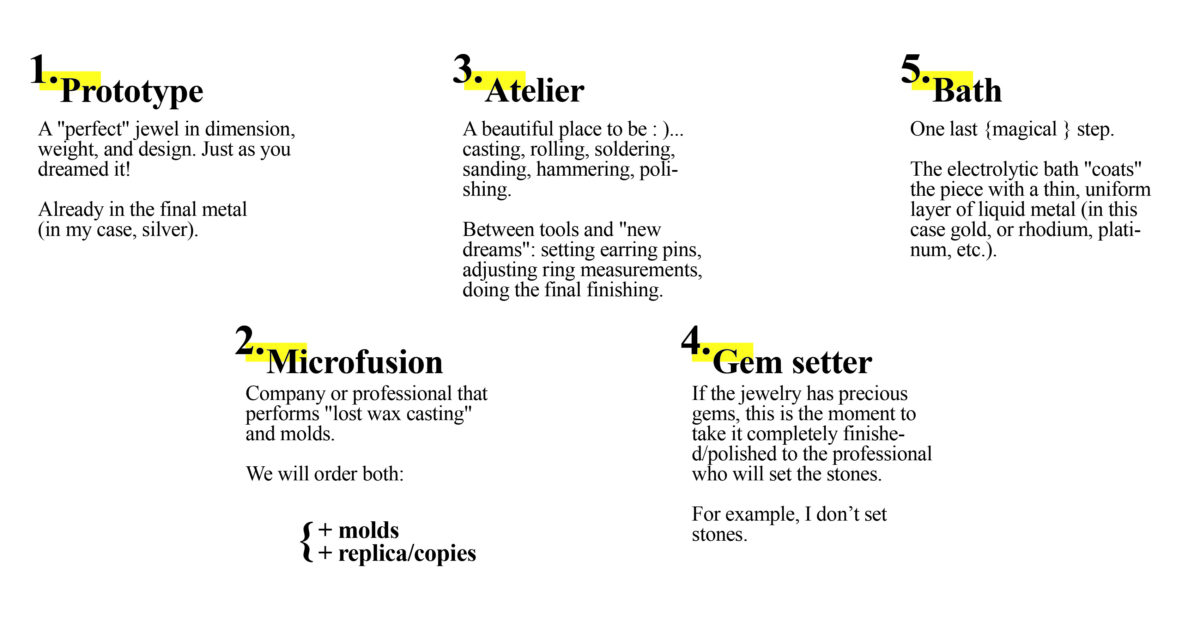
Step One. PROTOTYPE
This step should unite “rationality” (to understand if the piece is too thin; or too heavy, including rings; or if the balance of the earring really works well; if the earring tears the ear; etc.) and “emotion” (it looks beautiful!)… but in fact, many times the emotion of a beginner (or not so beginner) speaks louder and we start making the mold without the piece being completely ready… And this almost always means that you will have to redo the mold later on (and lose time and money too).
So I advise: when you have the piece ready, please analyze as rationally as possible whether it already deserves a mold; or whether it has to continue to be worked on.
Step Two. MICROFUSION
I always make in a company with more than 50 years experience in the sector. They are located in the Barri Gòtic, Barcelona. My pieces come mostly from “microfusion” (lost wax casting), a fascinating ancestral technique that before I entered this industry I did not know. One day I will explain the process in more detail: basically, a prototype becomes a mold, and from this mold the piece can be replicated in any metal.
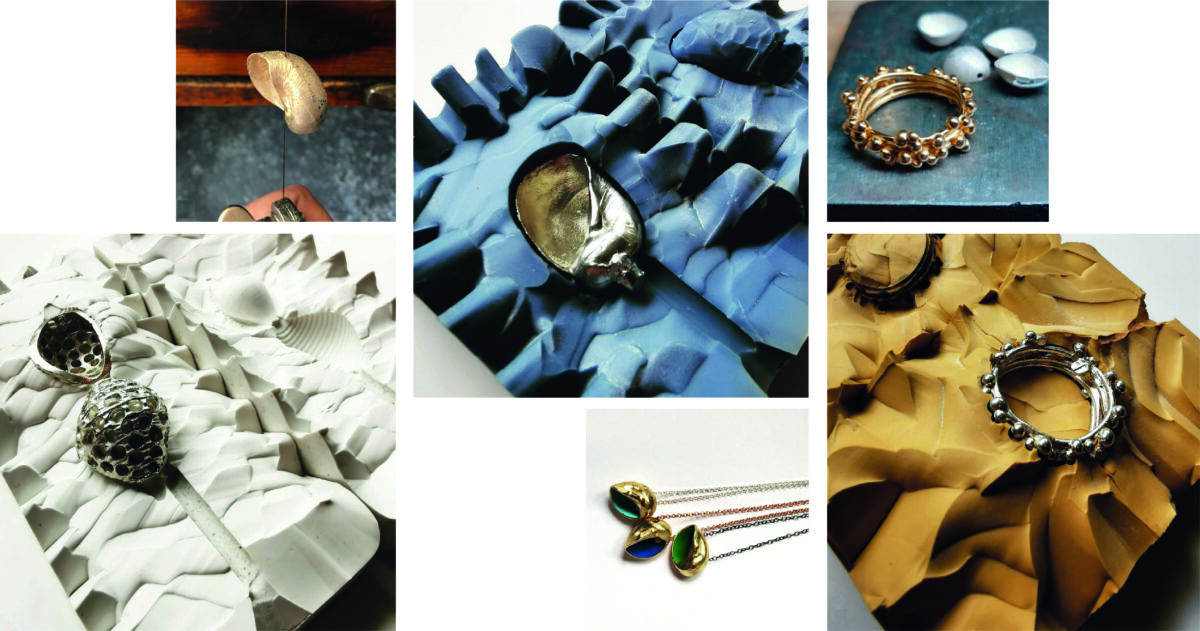
In this case, from my perfect prototypes (ergonomically too, for example my earrings are never heavy, nor the long ones), I go to Daranas and charge them:
(a). to make molds (to reproduce the pieces);
(b). to reproduce the piece “X” times, after the mold is ready. I choose the metal (silver, 9k yellow gold, 14k yellow gold, 18k yellow gold, rose gold, white gold, brass).
Where do I make molds, casting and reproduction pieces? DARANAS MICROFUSION
Step Three. WORKSHOP
Right after casting, we go to the atelier, where the magic happens: that’s when we adjust the numbering of the rings, put pins in the earrings, assemble clasps, give the final finishing. In the studio we also make from scratch the jewelry that does not come with a mold (the 100% handmade jewelry), for example the jewelry with recycled glass or ebony wood.
After finishing the piece in the atelier, if it does not have stones, we will go to step 5.
Where is the atelier located? Currently in the Barri Gòtic of Barcelona (Metro Plaza Catalunya), where a small team is in charge of the execution of the jewelry.
One time I rented a goldsmith’s bench in a jewelry coworking LA JOYA STUDIO.
The idea of jewelry coworking is very cool: the space is fully equipped, you only have to bring your small tools for individual use, and your silver, gold, brass. A very important point in this work system is that the exchange with other more and less experienced jewelers is always very enriching. Some will help you to execute the most difficult pieces (for you) and some will help you to “see” new forms and styles of jewelry. I recommend that you look in your city for coworkings or silversmiths willing to share a studio or rent a workspace for you.
I started at this coworking with a monthly rental, full time; then I went to mornings only; then to a pack of hours for the weekends… Until I stopped going because besides architecture being my “main” profession, I needed a mini team of goldsmiths to also produce the jewelry in small/medium quantities… One day I will also talk to you about my Business Model.
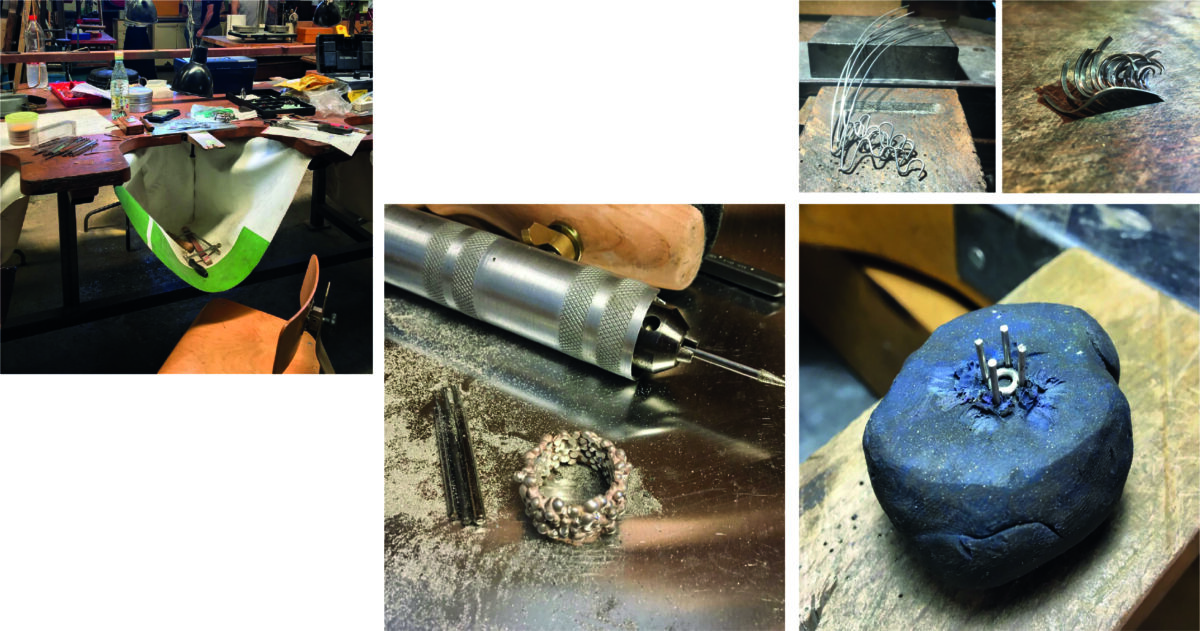
In 2017, when I really started studying jewelry (I would say when I got my hands dirty, in this case, in metals, casting, soldering, etc.) I also rented a “work table” at the School. I had classes with maestro Jaime Díaz in the mornings and stayed at the School in the afternoons to continue learning (also making mistakes), and working on my pieces. If you are thinking of learning how to make/execut jewelry I strongly recommend this school EL TALLER DE JOYERÍA BCN.
Step Four. STONE SETTER
In case the jewel has precious gemstones, after the perfect finishing in the atelier it is taken to the stone setter/encruster. In my case this person is not in the studio, it is a separate service and I have to go drop off/pick up the jewel (and pay separately, being the price calculated for each stone, depending on the stone, the type of metal, the design of the piece, the ease/difficulty of setting, etc).
After the carving, the engraver will give the piece a short overhaul, but usually it will return to the workshop to have the carving checked and the final polishing done.
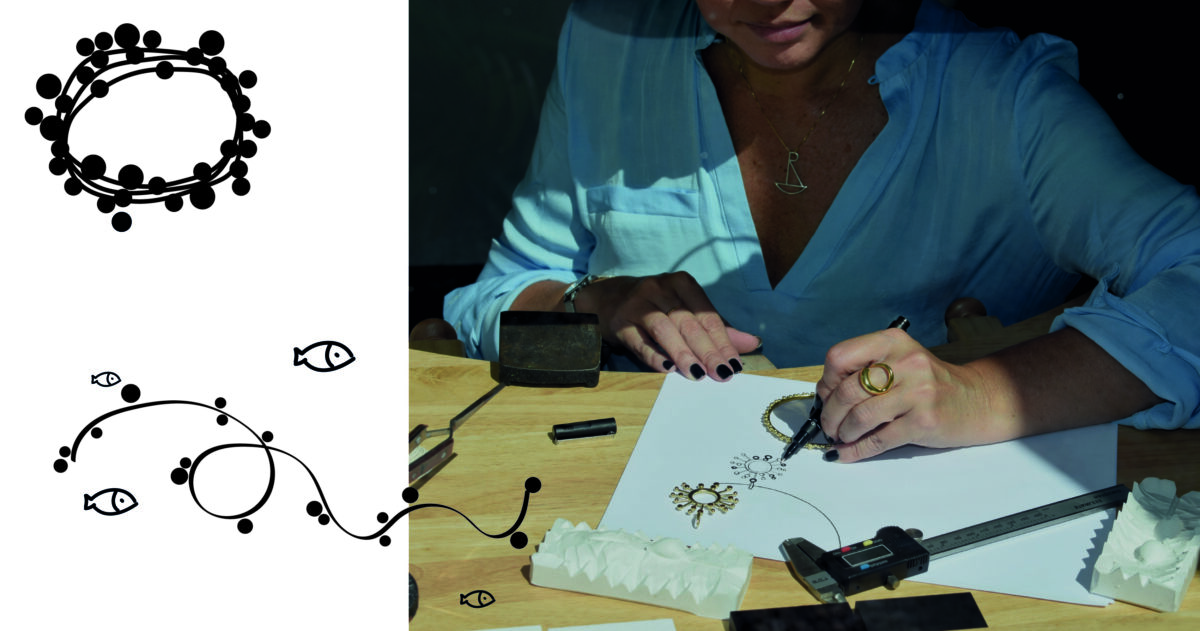
Step Five. BATHS
I do the baths in a company with more than 40 years of experience in the industry. So far I have done electrolytic baths in several companies in Barcelona, but this is my top 1: the quality of the baths, the diversity of finishes and the treatment are impeccable.
Where do I do electrolytic baths? APEL BCN
SUPPLIERS SPAIN
DEL VALLE (Barcelona, España)
ALMACENES ESTEBAN (Bilbao, España)
SUPPLIERS BRASIL
FORNITURA BULKA (Paraná, Brasil)
PACKAGING
WILHELM-ETUIS (Germany)
WESTPACK (Denmark)
FISCAL ASPECTS
All companies above, will ask you for the company documentation (just the number, which in Brazil is equivalent to the CPF or CNPJ) or even the opening report sent to Hacienda Española (Receita Federal in Brazil).
I am self-employed (in jewelry and architecture) and I currently pay (March 2023) 290 euros monthly for this activity in Barcelona. Every three months I have to send a report (which we call “Trimestral”) with all the expenses and income of the activity.
For this is necessary to add the activity of an accountant, which in this case makes the delivery of the quarterly and the Income Tax (here in Spain).
🌻
I hope this information is useful to you.
Thank you for your presence, see you in Instagram : )
Rachel
